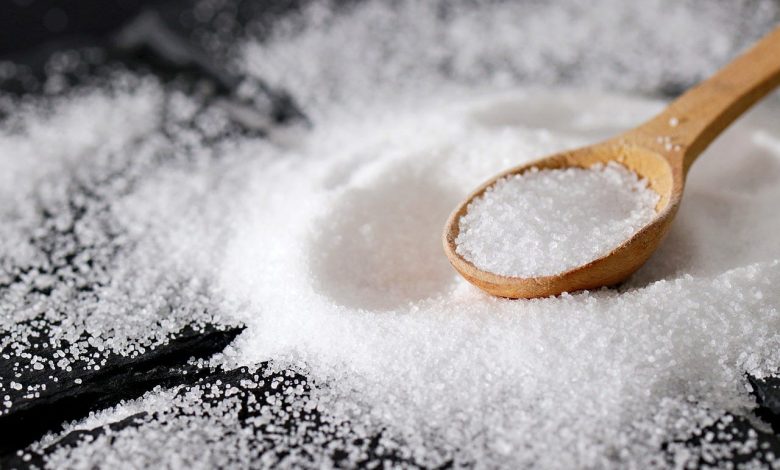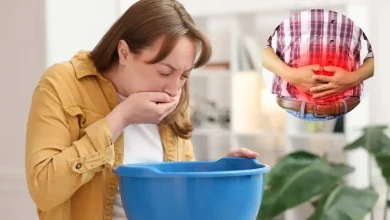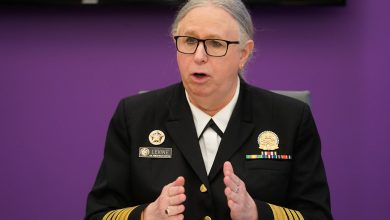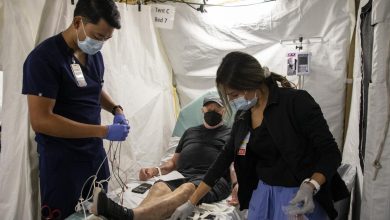Man’s Shocking Health Twist After Asking ChatGPT About Quitting Salt

When John Matthews, a 42-year-old office worker from Leeds, typed a question into ChatGPT one quiet evening — “What happens if I quit salt completely?” — he wasn’t expecting to end up in the middle of a personal health saga that would change how he thought about food, health, and even artificial intelligence.
What began as mild curiosity quickly spiraled into a startling twist that doctors, nutritionists, and John himself never saw coming.
The Curiosity That Sparked a Chain Reaction
John’s salt question came during what he calls a “midlife health rethink.”
After years of living on takeaway curries, crisps, and microwave dinners, John had started to feel sluggish. He was getting headaches more often, feeling bloated after meals, and noticed that his blood pressure was creeping upward during routine check-ups.
“I knew too much salt wasn’t good for you,” John says. “But I wanted to know exactly what would happen if I just stopped eating it altogether.”
Like millions of others, he turned to ChatGPT — the AI chatbot known for quick answers and surprising depth. Within seconds, ChatGPT explained how salt (sodium chloride) plays a vital role in nerve function, muscle contraction, and fluid balance — and warned that cutting it out completely could lead to health problems like hyponatremia (dangerously low sodium levels).
“I read the answer and thought, Oh… maybe I should still have some salt. But then I started wondering — how much is ‘enough’? How much is too much?”
From Curiosity to Experiment
Instead of taking the chatbot’s cautionary advice at face value, John decided to turn it into an experiment.
“I thought — what if I actually try this and see how my body reacts?” he says.
Over the next week, John began meticulously removing salt from his diet. He stopped adding any salt to food, switched to low-sodium bread, avoided processed snacks, and even scrutinized labels for hidden sodium in sauces and ready meals.
At first, he felt proud of his discipline. His taste buds began adjusting, food started tasting more naturally flavorful, and his swelling around the ankles — something he had ignored for months — seemed to reduce.
But by day ten, things took a turn.
The First Signs Something Was Wrong
John remembers the first symptoms clearly.
“I started feeling lightheaded whenever I stood up. I thought maybe I was just tired,” he says. “Then one morning, I woke up with this weird tingling in my fingers and lips.”
His energy levels plummeted. He found himself struggling to concentrate during meetings, and a mid-afternoon brain fog made even simple tasks feel exhausting.
That evening, John opened ChatGPT again.
He typed: ‘Is tingling and dizziness a sign of low salt?’
The AI explained that sodium is crucial for maintaining the body’s electrical signals, and low sodium could indeed cause neurological symptoms — but that these could also be signs of other health conditions, meaning professional medical advice was essential.
The Visit to the Doctor — and the Diagnosis
By day twelve, John’s symptoms worsened. He developed nausea, mild confusion, and muscle cramps. His wife insisted he book a GP appointment.
Blood tests revealed the problem: John’s sodium levels had dropped below the healthy range — a condition called hyponatremia.
Dr. Emily Carter, the GP who saw John, explains:
“People often think of salt purely as a health risk, but it’s actually vital in the right amounts. We need sodium for nerve impulses, muscle function, and regulating blood pressure. John’s strict salt elimination, combined with a relatively high water intake, diluted the sodium in his bloodstream to a dangerous level.”
The doctor immediately advised reintroducing moderate amounts of salt and adjusting his hydration habits. Within days of restoring sodium to his diet, John’s symptoms began to ease.
The “Shocking Twist” — How Quitting Salt Helped in an Unexpected Way
Here’s where the story takes a surprising turn.
During his medical check-up, doctors ran additional tests to check for underlying causes of his sodium drop. One of those tests revealed something unrelated — early-stage kidney function decline.
“It wasn’t severe, but it was there,” John says. “I’d had no idea. If I hadn’t gone to the doctor for the salt issue, I probably wouldn’t have found out until it was much worse.”
In a strange way, his misguided salt experiment — prompted by a casual question to ChatGPT — had led to the discovery of a completely different health issue that could now be addressed early.
What Science Says About Salt and Health
Salt has a complicated relationship with human health.
On one hand, excessive sodium intake is linked to high blood pressure, heart disease, and stroke. On the other, sodium is essential for survival.
According to the World Health Organization (WHO):
- Recommended daily sodium intake: Less than 2,000 mg (about 5 grams of salt) for adults.
- Risks of excess sodium: Hypertension, cardiovascular strain, kidney damage.
- Risks of too little sodium: Muscle weakness, confusion, seizures, and in extreme cases, death.
Nutritionist Sarah Bennett says the danger lies in extremes:
“It’s not about cutting salt completely — it’s about moderating it. People who eat a lot of processed foods get too much sodium, but people on ultra-clean diets can risk getting too little.”
The Role of AI in Health Advice
John’s case highlights an important point: AI can provide useful health information — but it’s not a replacement for professional diagnosis.
ChatGPT gave John accurate general advice about the risks of cutting salt entirely. The problem wasn’t the AI — it was how John interpreted it.
“I think I read the warning but decided to ‘test’ it anyway,” John admits. “That was my mistake, not ChatGPT’s.”
Experts agree that AI tools can be valuable for raising awareness, explaining concepts, and guiding people toward healthier choices — but they must be used responsibly.
John’s Life After the Incident
After his recovery, John made several lasting changes:
- Balanced salt intake: He now seasons his food moderately, aiming for recommended daily limits.
- Diet overhaul: More fresh vegetables, lean proteins, and whole grains; fewer processed snacks.
- Regular check-ups: His kidney health is now monitored, and early intervention measures have been put in place.
He has also developed a cautious respect for AI tools.
The Bigger Lesson
John’s story is a reminder that health is about balance — and that curiosity, while valuable, should be paired with caution.
Cutting salt completely might sound like a good idea if you’ve heard about its dangers, but the body’s need for sodium is non-negotiable. Over-restriction can be just as harmful as overindulgence.
Key Takeaways for Readers
- Don’t cut salt completely without medical supervision. The body needs sodium to function.
- Watch for symptoms of low sodium: Dizziness, confusion, tingling, muscle cramps.
- AI is a great starting point — but not the final answer. Always confirm health changes with a professional.
- Check labels. Many processed foods contain hidden sodium.
- Balance is better than extremes. Moderate salt intake plus a healthy diet is the safest path.
Final Word
John’s “shocking health twist” began with a simple question to a chatbot. While his salt experiment nearly landed him in serious trouble, it also saved him from a hidden kidney problem.
“It was a wake-up call,” he says. “And it taught me that the smartest health move isn’t cutting things out completely — it’s listening to your body and getting real advice.”




